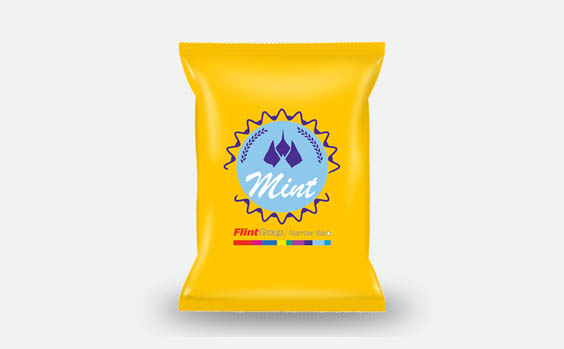Dual Cure UV-Curable Ink Series for Food and Pharmaceutical Labels and Flexible Packaging.Fully compliant flexo ink series accelerates switch from mercury to LED UV-curing, boosting cost savings, safety and productivity.
Flint Group introduces EkoCure® ANCORA™ Dual Cure food contact material (FCM) UV-curable ink for food, pharmaceutical and cosmetic label and flexible packaging applications. Compliant with indirect food contact regulations thanks to exceptional curing under both UV-LED and mercury UV systems, this new flexo ink series enables a phased transition to UV-LED technology. This, in turn, brings improvements in productivity, cost savings and sustainability – without disruption.
EkoCure ANCORA Dual Cure assures thorough ink anchorage and identical colour quality results under both LED and mercury lamps, as well as best-in-class low migration results on both unsupported film and label substrates. These properties have led to its compliance to the Nestlé guidance note on packaging inks (2018), current GMP, the Swiss Ordinance on Materials and Articles (SR 817.023.21), and the EuPIA Exclusion policy, The Plastic Regulation (EU) No 10/2011.(1)
The compatibility of EkoCure ANCORA Dual Cure with both UV technologies enables converters to make a gradual switch to LED, for example by upgrading the press one curing lamp at a time, lowering the financial risk and limiting downtime for refurbishment.
Switching to UV-LED curing with EkoCure ANCORA Dual Cure inks brings improvements in both sustainability and efficiency. It reduces energy costs by at least 50 per cent compared with using mercury lamps on press. Also, the elimination of mercury and ozone and the reduction of ambient noise means safer working conditions as well as a smaller environmental footprint.
UV-LED curing offers increased production time as lamps require no warming or cooling before and after operation. Speed increases of up to 25 per cent are possible, thanks to faster curing times.
Additionally, for brand owners, the assurance of an effective migration barrier, made possible by the ink in combination with the substrate, may facilitate the move to lighter, easier-to-handle packaging. For example, a change from glass to film, such as pouches or blister packs, may deliver significant supply chain savings.

